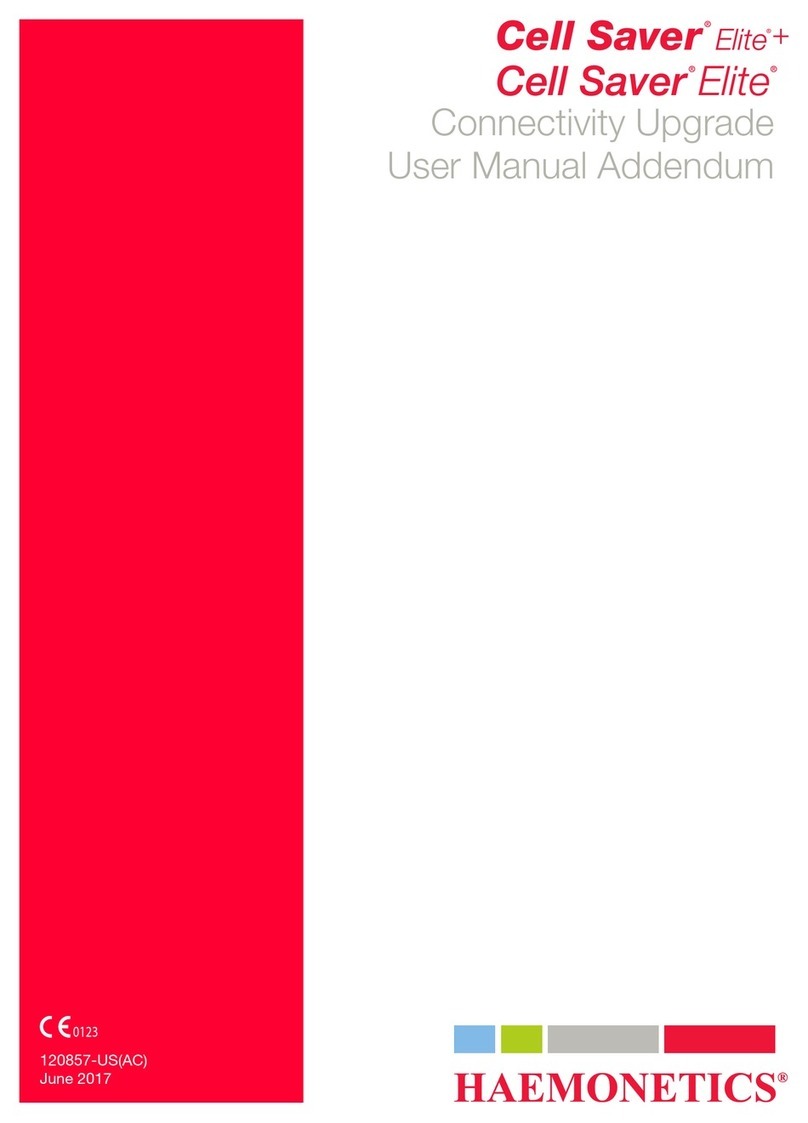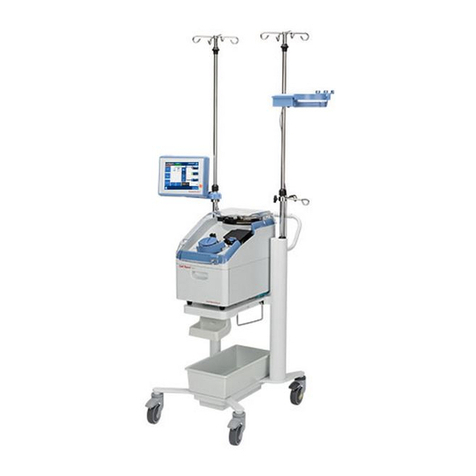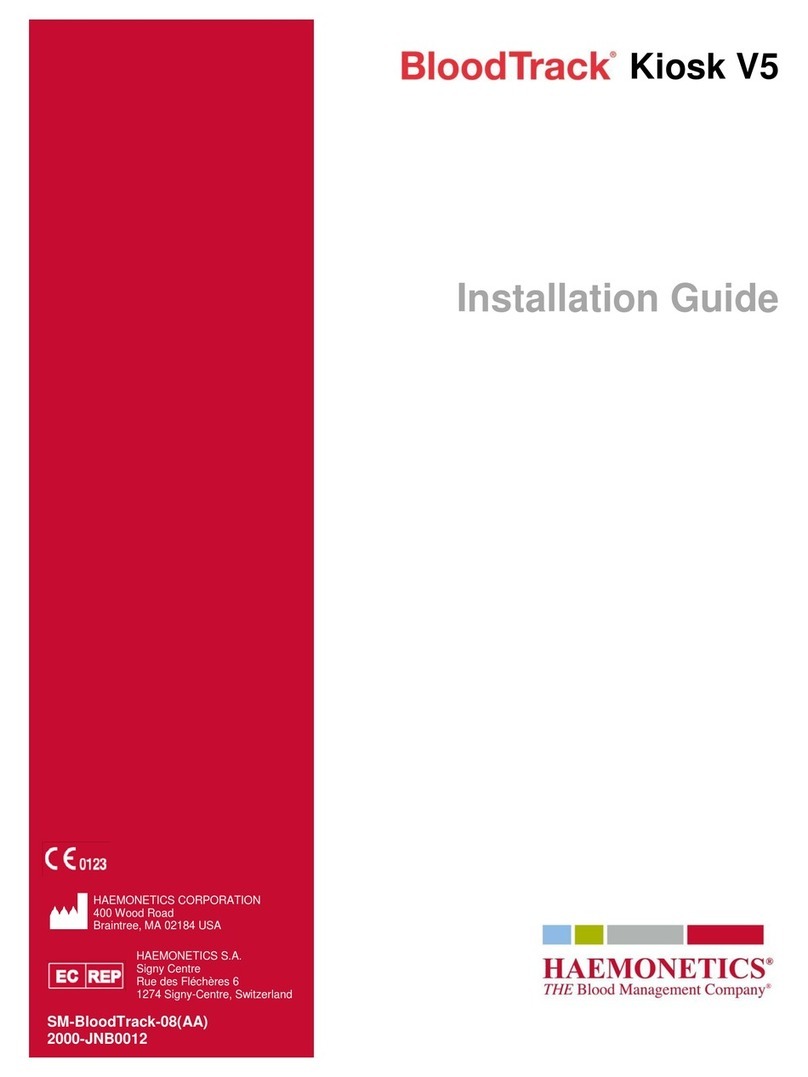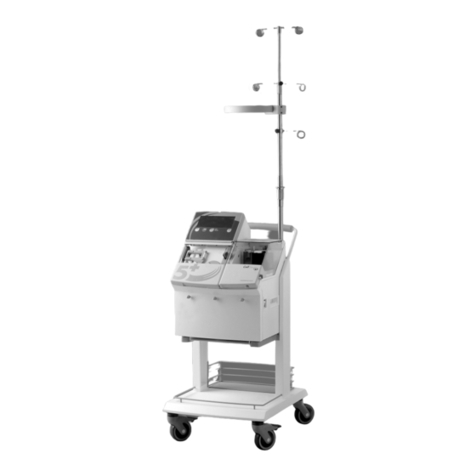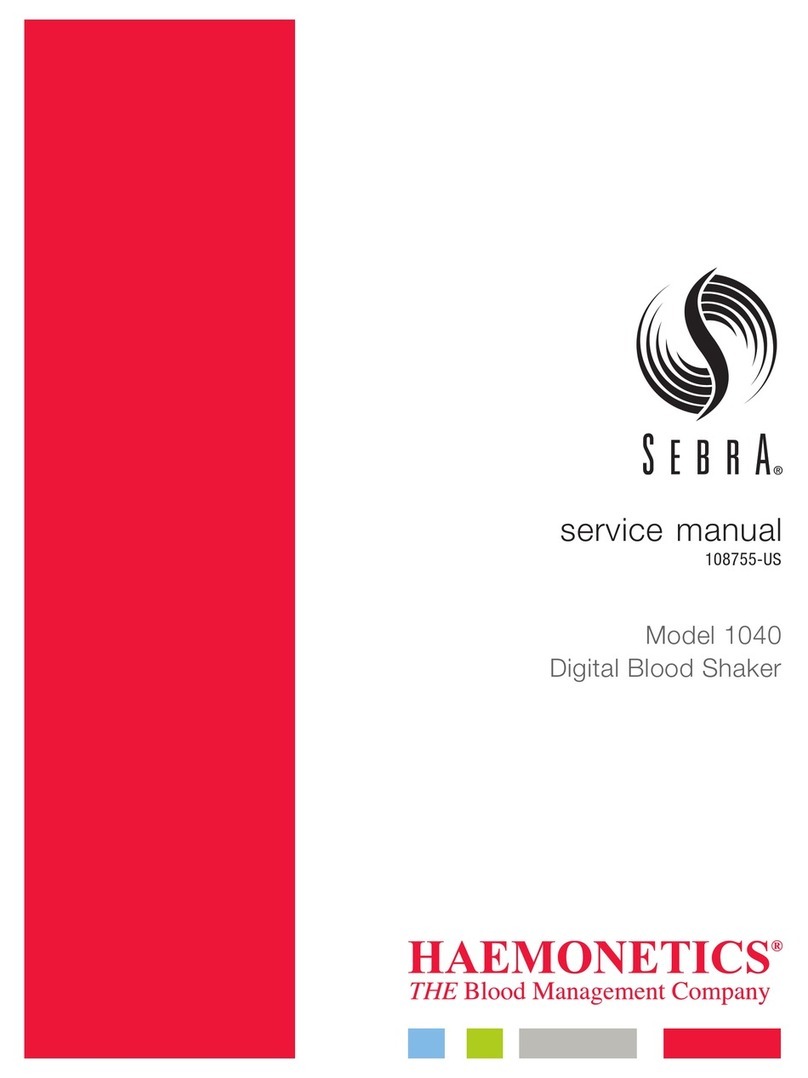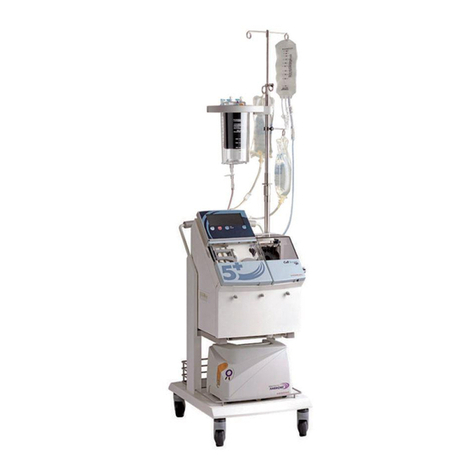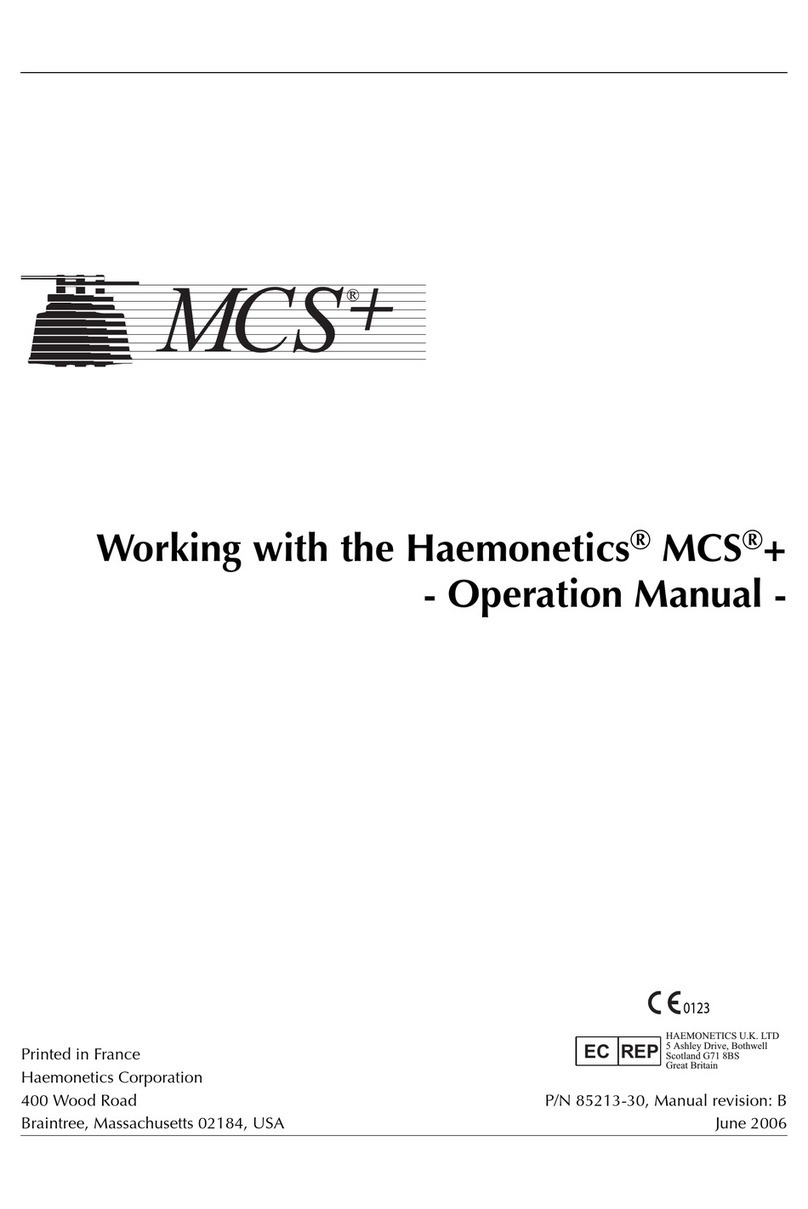
Table of Contents P/N 53063-50, Manual Revision: B
viii
Chapter 2: Equipment and Disposable Description
General . . . . . . . . . . . . . . . . . . . . . . . . . . . . . . . . . . . . . . . . . . . . . . . . . . . . 2-3
Controls and indicators . . . . . . . . . . . . . . . . . . . . . . . . . . . . . . . . . . . . . . . . 2-4
ON/OFF Power Switch and Fusing . . . . . . . . . . . . . . . . . . . . . . . . . . . . . 2-4
Display Panel . . . . . . . . . . . . . . . . . . . . . . . . . . . . . . . . . . . . . . . . . . . . . 2-4
Control Panel . . . . . . . . . . . . . . . . . . . . . . . . . . . . . . . . . . . . . . . . . . . . . 2-5
Major components . . . . . . . . . . . . . . . . . . . . . . . . . . . . . . . . . . . . . . . . . . . 2-9
Hardware . . . . . . . . . . . . . . . . . . . . . . . . . . . . . . . . . . . . . . . . . . . . . . . . 2-9
Disposables . . . . . . . . . . . . . . . . . . . . . . . . . . . . . . . . . . . . . . . . . . . . . 2-13
General operation . . . . . . . . . . . . . . . . . . . . . . . . . . . . . . . . . . . . . . . . . . . 2-18
Blood Collection . . . . . . . . . . . . . . . . . . . . . . . . . . . . . . . . . . . . . . . . . 2-18
Filling the Centrifuge Bowl . . . . . . . . . . . . . . . . . . . . . . . . . . . . . . . . . . 2-19
Cell Separation and Concentration in the Bowl . . . . . . . . . . . . . . . . . . 2-19
Red Cell Washing. . . . . . . . . . . . . . . . . . . . . . . . . . . . . . . . . . . . . . . . . 2-19
Washing Partial Bowls . . . . . . . . . . . . . . . . . . . . . . . . . . . . . . . . . . . . . 2-20
Emptying the Bowl . . . . . . . . . . . . . . . . . . . . . . . . . . . . . . . . . . . . . . . . 2-20
Chapter 3: Safety and Patient Care Precautions
General . . . . . . . . . . . . . . . . . . . . . . . . . . . . . . . . . . . . . . . . . . . . . . . . . . . . 3-2
Safety and patient care precautions . . . . . . . . . . . . . . . . . . . . . . . . . . . . . . . 3-3
Storage and Handling of Disposables . . . . . . . . . . . . . . . . . . . . . . . . . . . 3-3
Flammable Locations . . . . . . . . . . . . . . . . . . . . . . . . . . . . . . . . . . . . . . . 3-3
Electrical Shock Hazards . . . . . . . . . . . . . . . . . . . . . . . . . . . . . . . . . . . . 3-3
Rotating Machinery . . . . . . . . . . . . . . . . . . . . . . . . . . . . . . . . . . . . . . . . 3-4
Communicable Disease . . . . . . . . . . . . . . . . . . . . . . . . . . . . . . . . . . . . . 3-4
Restrictions to Flow . . . . . . . . . . . . . . . . . . . . . . . . . . . . . . . . . . . . . . . . 3-4
Twists and Kinks in Tubing . . . . . . . . . . . . . . . . . . . . . . . . . . . . . . . . . . . 3-5
Plasma Hemoglobin . . . . . . . . . . . . . . . . . . . . . . . . . . . . . . . . . . . . . . . . 3-5
Continuous Aspiration . . . . . . . . . . . . . . . . . . . . . . . . . . . . . . . . . . . . . . 3-5
Overheating . . . . . . . . . . . . . . . . . . . . . . . . . . . . . . . . . . . . . . . . . . . . . . 3-5
Red Cell Spillage . . . . . . . . . . . . . . . . . . . . . . . . . . . . . . . . . . . . . . . . . . 3-6
Managing the Inventory of Air . . . . . . . . . . . . . . . . . . . . . . . . . . . . . . . . 3-6
Pressure Reinfusion . . . . . . . . . . . . . . . . . . . . . . . . . . . . . . . . . . . . . . . . 3-6
Depletion of Clotting Factors . . . . . . . . . . . . . . . . . . . . . . . . . . . . . . . . . 3-7
Contraindications for Use . . . . . . . . . . . . . . . . . . . . . . . . . . . . . . . . . . . . 3-7
Anticoagulant Use . . . . . . . . . . . . . . . . . . . . . . . . . . . . . . . . . . . . . . . . . 3-7
Factors affecting processing time . . . . . . . . . . . . . . . . . . . . . . . . . . . . . . . . . 3-8
Cell Salvage . . . . . . . . . . . . . . . . . . . . . . . . . . . . . . . . . . . . . . . . . . . . . . 3-8
Sequestering . . . . . . . . . . . . . . . . . . . . . . . . . . . . . . . . . . . . . . . . . . . . . . 3-8
